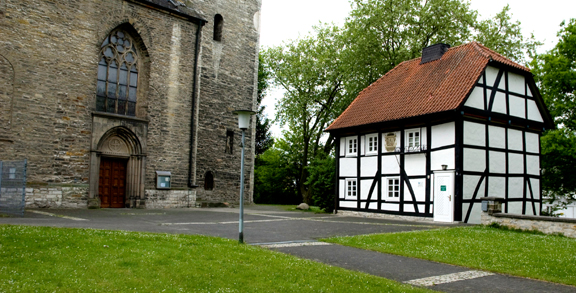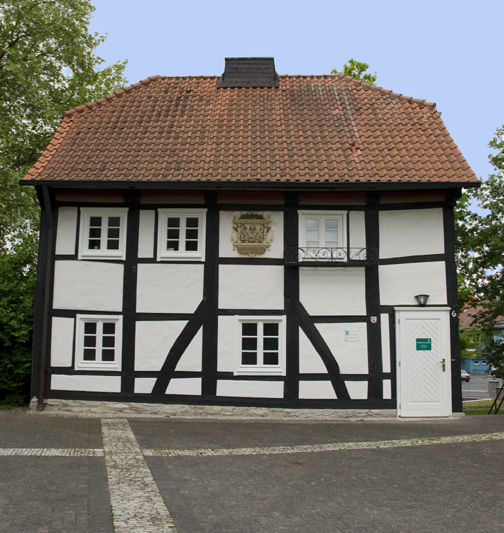Convent school in Geseke, Germany   The Convent school, shown in the photos above, was established in honor of the Blessed Virgin Mary and St. Cyriakus for noble-born ladies on land donated by the Hahold family in the year 946 AD. This was only a few years after the town of Geseke first came into existence when Holy Roman Emperor Ludwig the Pious gave 5 farms to Count Riedag in the location of present-day Geseke, according to a guidebook which I purchased in Geseke. In 952, King Otto placed the convent under his protection and gave it sacrosanct status. In 986, the St. Cyriakus church was built next to the Convent school. The present church of St. Cyriakus, shown in the photo at the top of the page, was built at a later time at the same location. In 1014, the convent in Geseke was placed under the Control of the Archbishopric of Cologne. In 1180, the Emperor Friedrich Barbarossa transferred the Duchy of Westphalia, to which the town of Geseke belonged, to the Archbishop of Cologne, when Henry the Lion, the Duke of Saxony, fell into disgrace. Geseke became the most important border town in the east in the defense of Cologne against the Bishopric of Paderborn. As a border town, Geseke was exposed to constant unrest, looting and attack, according to the Geseke guidebook. This is why Geseke became a fortified town in 1217. A wall that was 3 kilometers long was built around the town and the farmers from the villages in the area left their farms to live within the town walls. The wall was torn down in 1830. Back to Church indexHomeThis page was created on July 21, 2008 |